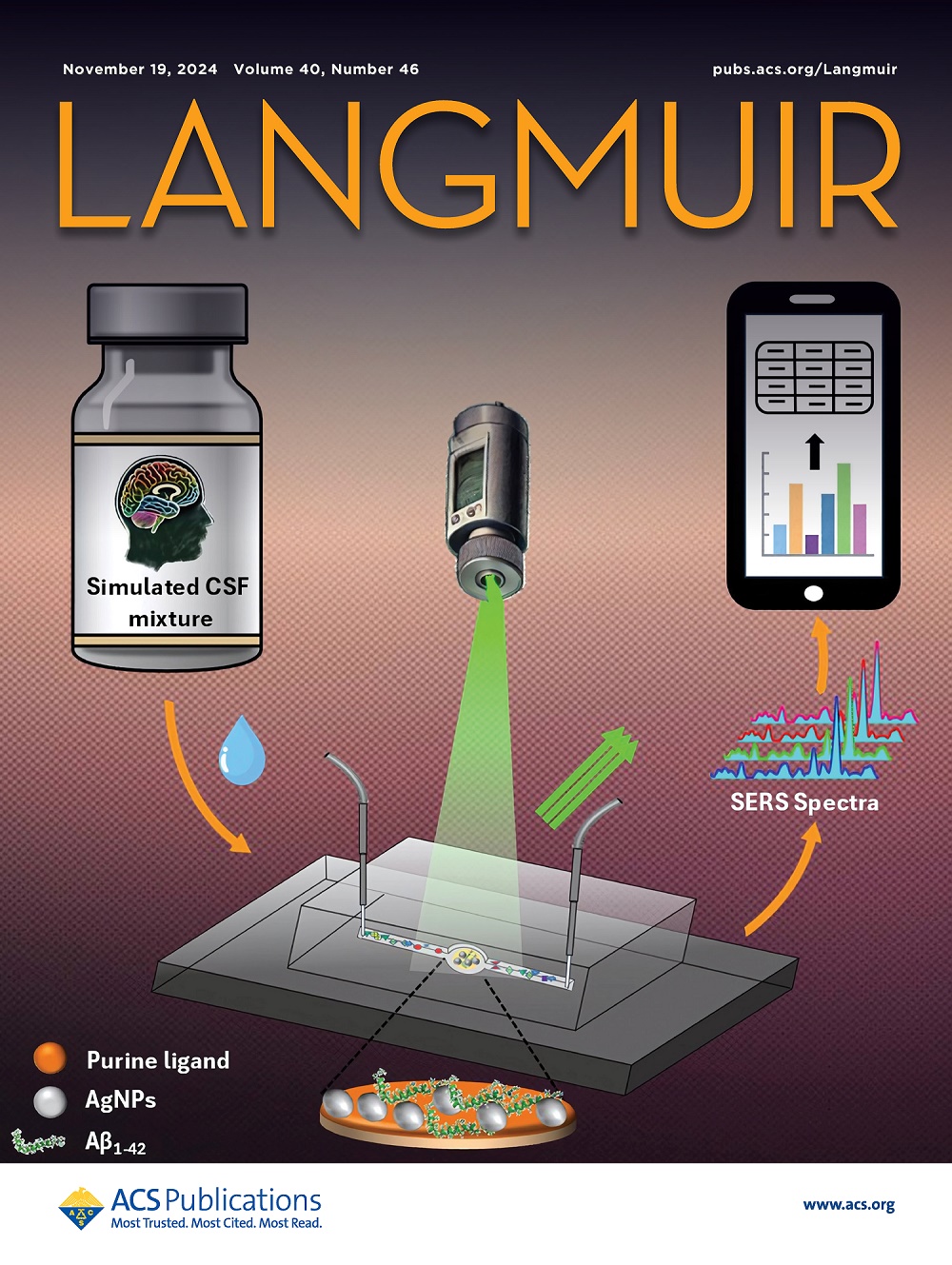Geometry Dependence of the Receding Angle of a Droplet on a Solid Cylindrical Surface
IF 3.9
2区 化学
Q2 CHEMISTRY, MULTIDISCIPLINARY
引用次数: 0
Abstract
Droplets that partially wet solid surfaces exhibit hysteresis in their contact angle. The values of the minimum (receding) and maximum (advancing) angles, θR and θA, are empirically well-defined and thought to be unique for a given set of materials. We measured the contact angles of water droplets hanging from hydrophobic, PDMS-functionalized glass and found that the value of θR varies with the curvature of the glass. The effect is substantial: θR changes from 86.0 ± 1.9° on a flat plate to 95.6 ± 1.9° on a 2 mm diameter rod of the same material. The measured values of θA were independent of geometry (θA = 103.2 ± 0.9°). We found a consistent trend among PDMS-functionalized glass cylinders with diameters ranging from 2 to 12.7 mm. We also measured the speed at which the contact line moved just after receding; these results showed a receding speed ∝ cos(θR) – cos(θE) and a consistent equilibrium contact angle, θE = 103.4 ± 2.3°. Finally, we measured the sliding of water droplets as rods were tilted. The larger θR (and thus smaller hysteresis) for a 2 mm-diameter rod led to droplets sliding at a tilt angle of just 21° from horizontal, compared to the 48° minimum tilt for a 7 mm rod. The results show that hysteresis arises from an energy barrier that depends on the shape of the droplet and contact line, both of which change with substrate curvature. The results may lead to designing surfaces that better trap water droplets or shed them for self-cleaning or water-harvesting applications.

固体圆柱形表面上液滴后退角的几何关系
部分湿润固体表面的液滴在接触角上表现出迟滞性。最小(后退)角和最大(前进)角的值,θR和θA,在经验上定义良好,并且对于给定的一组材料被认为是唯一的。我们测量了挂在疏水pdms功能化玻璃上的水滴的接触角,发现θR的值随着玻璃的曲率而变化。影响是实质性的:θR从平板上的86.0±1.9°变化到相同材料的2mm直径棒上的95.6±1.9°。θA的测量值与几何形状无关(θA = 103.2±0.9°)。我们发现pdms功能化玻璃圆柱体的直径范围为2至12.7 mm。我们还测量了接触线在后退后移动的速度;实验结果表明,射流的后退速度∝cos(θR) - cos(θE)和平衡接触角θE = 103.4±2.3°是一致的。最后,我们测量了水滴在杆倾斜时的滑动。直径为2mm的杆的θR较大(因此滞后性较小),导致液滴以距水平仅21°的倾斜角滑动,而直径为7mm的杆的最小倾斜角为48°。结果表明,磁滞是由能量势垒引起的,能量势垒取决于液滴的形状和接触线,两者都随着衬底曲率的变化而变化。研究结果可能会导致设计出更好地捕获水滴或脱落水滴的表面,用于自清洁或集水应用。
本文章由计算机程序翻译,如有差异,请以英文原文为准。
求助全文
约1分钟内获得全文
求助全文
来源期刊

Langmuir
化学-材料科学:综合
CiteScore
6.50
自引率
10.30%
发文量
1464
审稿时长
2.1 months
期刊介绍:
Langmuir is an interdisciplinary journal publishing articles in the following subject categories:
Colloids: surfactants and self-assembly, dispersions, emulsions, foams
Interfaces: adsorption, reactions, films, forces
Biological Interfaces: biocolloids, biomolecular and biomimetic materials
Materials: nano- and mesostructured materials, polymers, gels, liquid crystals
Electrochemistry: interfacial charge transfer, charge transport, electrocatalysis, electrokinetic phenomena, bioelectrochemistry
Devices and Applications: sensors, fluidics, patterning, catalysis, photonic crystals
However, when high-impact, original work is submitted that does not fit within the above categories, decisions to accept or decline such papers will be based on one criteria: What Would Irving Do?
Langmuir ranks #2 in citations out of 136 journals in the category of Physical Chemistry with 113,157 total citations. The journal received an Impact Factor of 4.384*.
This journal is also indexed in the categories of Materials Science (ranked #1) and Multidisciplinary Chemistry (ranked #5).
 求助内容:
求助内容: 应助结果提醒方式:
应助结果提醒方式:


